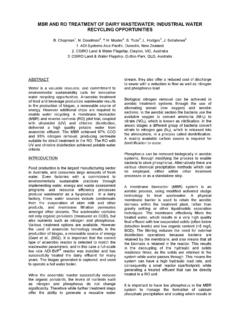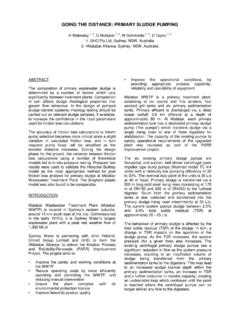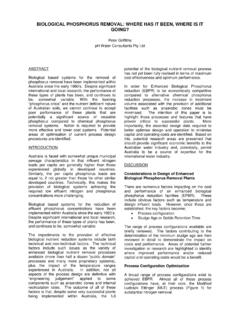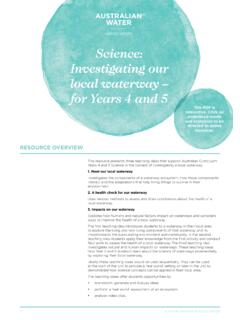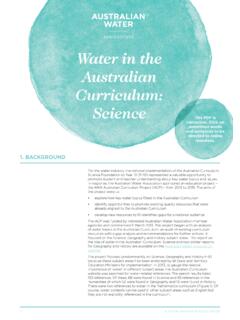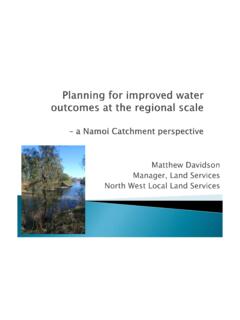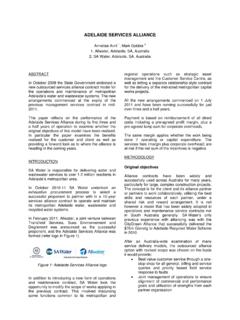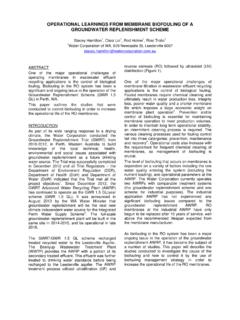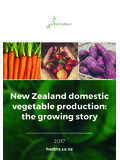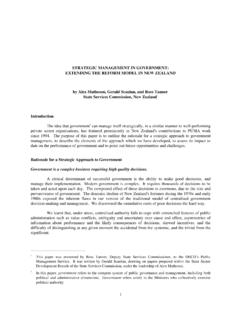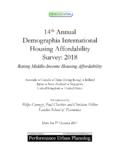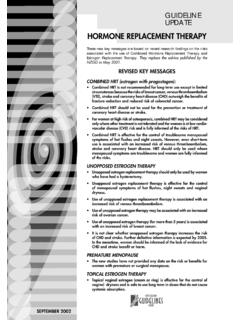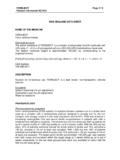Transcription of A CASE STUDY OF HOW IRRIGATION SCHEMES IN …
1 A CASE STUDY OF HOW IRRIGATION SCHEMES in new zealand ARE EVOLVING TO MEET CHANGES IN FARMING PRACTISE AND REGULATION David Carshalton 1, 1. Beca PTY Ltd, Melbourne, Victoria ABSTRACT Beca Ltd (Beca) has been working with several existing IRRIGATION SCHEMES in Canterbury, New zealand over the past five years to determine how SCHEMES can meet the changing needs of irrigators. In the last fifteen years a large portion of irrigators on these SCHEMES have installed new spray IRRIGATION systems to replace existing border dyke (flood) systems that have been in operation since the 1940s.
2 These on-farm system upgrades have been driven by a desire to improve the efficiency of their IRRIGATION systems on light Canterbury soils. Regulation has evolved over this period to require a higher standard of monitoring and control to meet water quantity and quality standards. The IRRIGATION SCHEMES currently consist of open channel infrastructure that requires at least minor upgrades to adjust to the changing environment. This paper offers a case STUDY of the response of three IRRIGATION SCHEMES to the changes in IRRIGATION practise and regulatory requirements.
3 INTRODUCTION Description of SCHEMES Referred to in this Case STUDY This case STUDY refers to the work Beca has undertaken for three IRRIGATION SCHEMES : Mayfield Hinds IRRIGATION Scheme (MHIS) This scheme was built in the mid-1940 s and supplies 33,000ha of farm land between the Rangitata and Hinds Rivers in Mid Canterbury. Valetta IRRIGATION Scheme (VIS) This scheme was built in the mid-1940 s and supplies 13,000ha of farm land to the west of Ashburton in mid Canterbury. Amuri IRRIGATION Company (AIC) AIC operates three IRRIGATION SCHEMES built in the 1980 s supplying about 25,000 ha of farm land between the Hurunui and Waiau Rivers in North Canterbury.
4 Figure 1 shows the location of the SCHEMES within the South Island of New zealand . The infrastructure in each scheme is owned by a co-operative company whose shareholders are the farmers supplied by the scheme. All of the SCHEMES are run-of-river SCHEMES , with no storage originally constructed for them. The SCHEMES are each manually controlled by racemen adjusting weirs on open channels. Typically the flow in each channel is set once per day. The SCHEMES require about one raceman per 10,000ha to operate efficiently. Water is delivered in accordance with a fixed roster, and is recorded manually by the racemen.
5 Investigation into the efficiency of the SCHEMES demonstrates that the water taken into the scheme is around 20% more than what each scheme allocates to the farmer irrigators. This water is either leaked from the open channels, bywashed back into the river, or given to farmers above their allocated flow to avoid bywashing the water. (Bywash is water taken into the IRRIGATION scheme that is not used and released back to the river). Figure 1: Locations in the South Island, NZ, of the IRRIGATION Schems Considered in this Case STUDY OPERATING ENVIRONMENT IRRIGATION Practises Originally the farms were irrigated using border dyke IRRIGATION on a fortnightly roster.
6 In the past 15 years around 80% of irrigators, varying for each scheme, have converted from border dyke to spray IRRIGATION , mostly using centre pivots. This has allowed water use efficiency to be greatly increased from the original border dyke IRRIGATION which has an uneven distribution on the light soils typical of the Canterbury Region in new zealand . The on farm spray irrigators are supplied by pumping either directly from the existing open channels (used on the AIC SCHEMES ) or from on-farm storage ponds (as on the MHIS and the VIS SCHEMES ).
7 Pumping directly from the open channels is the lower cost option as it doesn t require the construction of on-farm storage ponds. However due to the manual control of the open channels it requires excess water to be run through the channels in order to maintain a continuous supply to farms, which leads to bywash back to the river at the downstream end of the scheme. The use of on-farm ponds requires additional capital expenditure, but allows flow buffering in the open channel system to prevent bywash from the scheme. Changes in Land Use There has been a substantial shift in land use of the last 10 years from cropping and meat/wool production (sheep and cattle) to dairy farming.
8 Dairy farms are a more intensive land use that requires greater certainty over production levels. This results in a need for more efficient and reliable IRRIGATION systems. Further, the returns on sheep and beef farming have been unable to support the cost of the increased efficiency required by regulation and hence farmers have shifted to dairy production. Summary of the Regulatory Setting The use of water for in new zealand is the responsibility of the respective regional council. For all of the SCHEMES covered by this STUDY this is the Canterbury Regional Council, which is branded Environment Canterbury (ECan).
9 The regional council has authority to grant resource consents (under the Resource Management Act 1991) that control the take and use of surface and groundwater. The water supplied to each IRRIGATION scheme is governed by a resource consent which contains conditions of use. The bywash from the scheme (water taken into the scheme that is not used) is also subject to a resource consent. Water leached from the irrigated land into ground water, or runoff that is washed into waterways has not previously required resource consent. In the last ten years the quality of natural water ways has become a focus of national politics in new zealand , which has led to the regional councils being required to improve the quality of natural waterways.
10 This principally will be done by adding conditions onto existing water use consents that will limit the amount of nutrients that can be discharged into water ways and ground water. In August 2012, ECan released the Proposed Land and Water Regional Plan (pLWRP) which sets out how the council will achieve the improvements required in water quality in natural waterways. In this plan, ECan proposes some significant changes for farmers, including: Shifting the focus of water use quantity regulation to include both quantity and quality.
